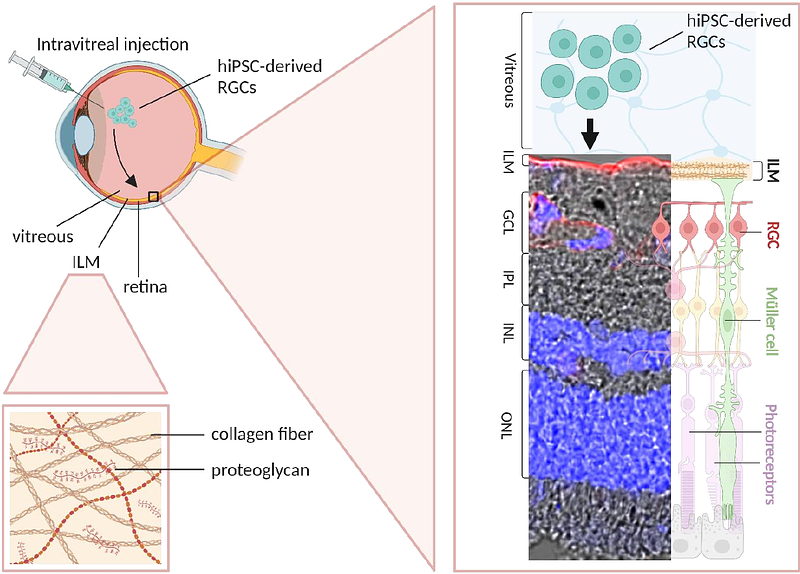Photodisruption of the inner limiting membrane promotes retinal engraftment of stem-cell derived retinal ganglion cells

Photodisruption of the inner limiting membrane promotes retinal engraftment of stem-cell derived retinal ganglion cells
De Coster, E.; De Clerck, K.; De Clercq, C.; Li, W.; Punj, D.; Vanmeerhaeghe, B.; De Smedt, S.; Braeckmans, K.; Hadady, H.; Remaut, K.; Johnson, T. V.; Peynshaert, K.
AbstractGlaucoma is the leading cause of irreversible blindness, driven by the progressive loss of retinal ganglion cells (RGCs). Stem cell-derived RGC transplantation could revolutionize glaucoma treatment, but the inner limiting membrane (ILM) remains a major obstacle by hindering cell migration into the retina. Interestingly, the ILM represents a double-edged sword for RGC engraftment: on the one hand, it greatly hinders cell migration, whereas on the other hand, its presence during retinal development is necessary for neuronal migration and retinal lamination. As an alternative to current invasive and harmful strategies to disrupt the ILM, we introduce ILM photodisruption, a minimally invasive biophotonic method that can manipulate the integrity of the ILM with unprecedented precision. In this study, we have finetuned the technology in bovine and human organotypic retinal explants to create templated ILM pores, creating entryways for donor RGCs to enter the retina while preserving most of the membrane to confer guidance cues for their engraftment. Applying this technology, we were able to promote donor RGC survival, enhance cell spreading and facilitate integration into the retina. Overall, our findings demonstrate that ILM photodisruption effectively addresses a key barrier in RGC replacement, paving the way for advancing retinal regeneration toward clinical application.